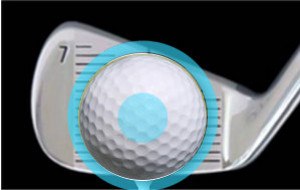
Generally, the answer is yes. Placing the ball on a tee instills an extra dash of confidence and produces contact slightly higher on the clubface, which adds loft to the shot. (It’s important not to tee the ball too high, though, as this can cause an unwanted lifting action in your downswing.)
But there are golfers – usually good ones – who eschew the tee in certain situations. For example, when hitting a wedge or other short iron where the grass on the teeing ground is sufficiently plush to provide a perfect lie. They may also play the ball off the turf when a low shot, such as a knock-down into the wind, is called for. Very rarely will they play a mid-iron, long iron or hybrid without the aid of a tee, however.
Whether to tee the ball on a par 3 hole in golf depends on various factors, including the design of the hole, personal preference, and the specific conditions of the course. Here are some considerations to help you decide whether to tee the ball on a par 3:
- Tee Height: On most par 3 holes, there is a designated tee area with varying tee heights. Using a tee can elevate the ball, allowing you to hit it at the ideal height for your swing. Proper tee height ensures clean contact with the ball and helps you avoid striking the ground before making contact.
- Green Design: Consider the design of the green and the surrounding hazards. Some par 3 holes have elevated greens or bunkers near the front, making it essential to carry the ball a certain distance. Tees allow you to position the ball at an appropriate height to clear hazards and land softly on the green.
- Wind and Distance: If the par 3 hole is playing into the wind or requires a specific distance to reach the green, using a tee can help you optimize your shot trajectory and distance. A higher tee height can help you launch the ball higher into the air, combating the wind and achieving the desired distance.
- Personal Comfort: Some golfers feel more comfortable and confident when using a tee on par 3 holes. It can provide a mental boost and lead to better swings and more accurate shots.
- Course Rules: Check the local rules of the golf course you're playing on. Some courses may have specific rules regarding teeing the ball on par 3 holes. Some courses may require the use of tees on all par 3s, while others may allow you to play from the grass.
- Tee Box Conditions: Assess the conditions of the tee box. If it's a poorly maintained or uneven tee box, teeing the ball may provide a more consistent setup for your shot.
Ultimately, it comes down to personal preference and the specific circumstances of each par 3 hole. Many professional golfers tee the ball on par 3s, as it allows for better control and precision in their shots. However, some golfers, especially skilled amateurs, may choose to play from the grass if they feel more comfortable with that setup.
It's essential to practice hitting from both tees and grass during your practice sessions to gain a better understanding of what works best for you on different par 3 holes. Experimenting with different tee heights and approaches will help you find the best strategy for your game and improve your performance on par 3s.
To determine your best par-3 approach, experiment on the range by teeing up and hitting shots with various irons, then playing those same shots right off the grass.
You may decide to tee up the same club in some situations while playing it down in others.
Golf Ball Videos:
– Compression Video
– Spin Video
– Dimples Video
– Golf Ball Brands Video
– Titleist Video
– Understanding Spin Video





